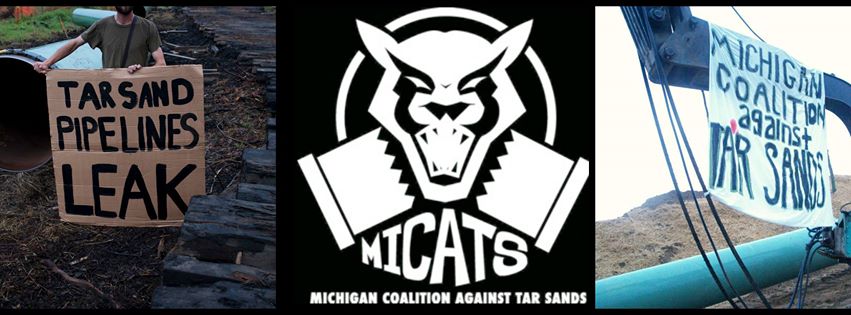By Michigan Coalition Against Tar Sands (MI-CATS)
BATTLE CREEK, Noon, on December 13th:
After activist and Kalamazoo resident Chris Wahmhoff’s felony pretrial, Michigan Coalition Against Tar Sands (MI-CATS) will hold a press conference to raise awareness about chemical oil dispersants found in the Kalamazoo River. Earlier this year Chris protested Enbridge Energy by skateboarding into their pipeline and stopping construction. He was charged with resisting and obstructing an officer and faces 2 years in prison.
Scientists and residents are questioning how chemicals shockingly similar to those used in the BP Deepwater Horizon gulf oil spill, and Exxon Valdez tanker spill disasters, would end up in the Kalamazoo River from Marshall, Michigan to more than 40 miles downriver. In the aftermath of the 2010 Kalamazoo oil spill Enbridge was fined for each gallon of oil recovered. Chemical dispersant breaks up oil into unrecoverable particles. Both Enbridge and the EPA have denied that any dispersants were used.
However, since August, samples collected from the Kalamazoo River have been analyzed and found to contain chemical signatures similar to Corexit 9527, Corexit 9727A, and Corexit 9500. Corexit 9527, 9727A, 9500 are rare and are ingredients in a group of chemical oil dispersants marketed as Corexit. Corexit was used in the BP oil spill and has had carcinogenic, respiratory, and hemorrhaging effects on residents, clean-up workers, and wildlife. Calhoun County residents are experiencing these same toxicity issues. Senior Policy analyst at the EPA, Hugh Kaufman has found effects of Corexit to be worse than the oil spill itself. Studies by a group of local and national scientists and doctors are confirming our suspicions- that chemicals dispersants or surfactants were used to hide the severity of the 2010 tar sands oil spill.
Resident Michelle Barlond Smith, who conducted health surveys along the spill area, along with several residents along the river, reported that dump trucks would drive up to the river and dump truck loads of material into the water. We are questioning the safety of the river and the water due to these chemicals. We are concerned about human and animal health, and demanding a health study contrary to Michigan Department of Community Health’s and Calhoun County Health Officials and Agency for Toxic Substances and Disease Registry.
Join us. S River Rd, Battle Creek, MI 49014. 12:00 Noon, December 13th. Question and answer session with scientists & activists to follow, at 4785 Beckley Rd, Battle Creek, MI 49015
